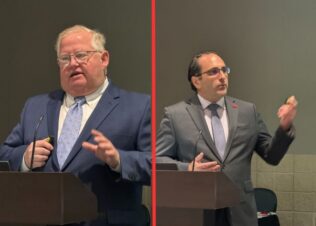The handshake to seal the deal, ideas scribbled on a cocktail napkin and the throwback concept of face-to-face conversations are now a thing of the past? We have transitioned into the new age of communication. Due to the emergence of email, texts, IMing, Facebook, Twitter—the list goes on—which I think are crucial in today’s social networking landscape—the true richness and effectiveness of conveying oneself, perhaps, is lost. Kind of ironic coming from this blog. But hear me out on this.
 According to a September 2014 report conducted by Gallup (www.gallup.com), texting, using a cellphone and sending and reading email messages are the most frequently used forms of nonpersonal communication for adult Americans. Between 37% and 39% of all Americans said they used each of these “a lot” on the weekday prior to being interviewed.
According to a September 2014 report conducted by Gallup (www.gallup.com), texting, using a cellphone and sending and reading email messages are the most frequently used forms of nonpersonal communication for adult Americans. Between 37% and 39% of all Americans said they used each of these “a lot” on the weekday prior to being interviewed.
“One of the most striking cultural and social changes in the U.S. in recent decades has been the revolution in the ways Americans communicate,” writes author Frank Newport.
Interestingly, the younger the American, the more likely he or she is to communicate using these newer technologies, meaning millennials today are a generation that is highly “in touch” with their friends and relatives. It is possible that older Americans make up for their lack of use of these modes of communication by talking to others in person, or perhaps by traditional mail, states the report.
In the present era, the percentage of 18- to 29-year-olds who used the seven methods “a lot” the previous day averages 34%, and that percentage drops to 26% among those aged 30 to 49, 21% among those aged 50 to 64, and down to 10% among those aged 65 and older.
Computer and smartphone use has dramatically accelerated, and texting, cellphones and email are the most commonly used modes of communication out of seven categories—text, cell phones, email, Facebook, Instagram or other social media site, business landline, home landline and Twitter.
But this is the reality among the younger demographic. Let’s face it: we live in an “instant gratification” society, where time is critical, and conversations terse. According to a story by Scott Matteson on TechRepublic.com (http://www.techrepublic.com/article/are-smartphones-are-making-us-less-social/), “You can go into a restaurant and see friends and couples spending more time with an electronic device than a fellow human being. There’s even a term for this called phubbing; ‘the act of snubbing someone in a social setting by looking at your phone instead of paying attention.’”
The art of conversation is lost—reading body language, hearing excitement or sorrow over the phone is lost through the rigidity of a 140-character message, for example.
So technically, we do communicate more and we are more socially integrated, but in lieu of social media, aren’t we more anti-social? For me, there is a piece of that art that is dying.
 John Mesenbrink is president and co-owner of Mechanical Hub. He has been covering the trades for more than 17 years and has been covering the plumbing & heating industry for more than 12 years. Follow him @JohnMesenbrink and follow Mechanical Hub @Mechanical_hub.
John Mesenbrink is president and co-owner of Mechanical Hub. He has been covering the trades for more than 17 years and has been covering the plumbing & heating industry for more than 12 years. Follow him @JohnMesenbrink and follow Mechanical Hub @Mechanical_hub.




Join the conversation: